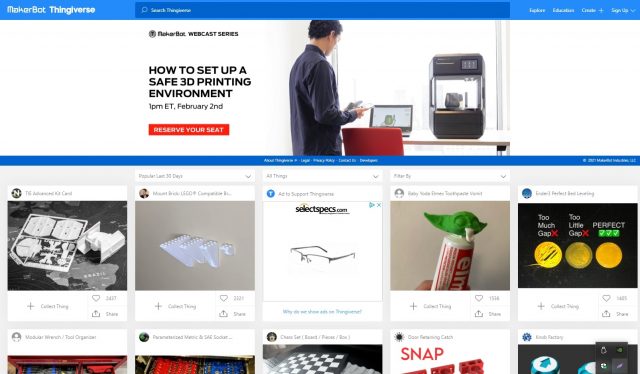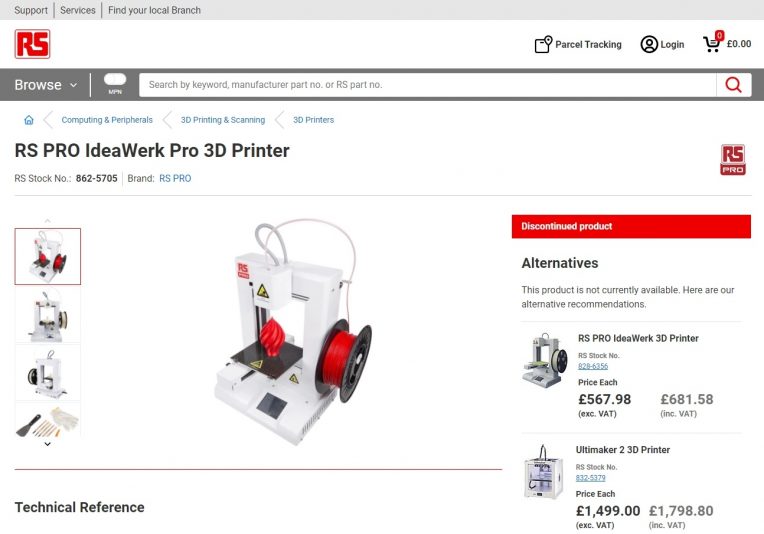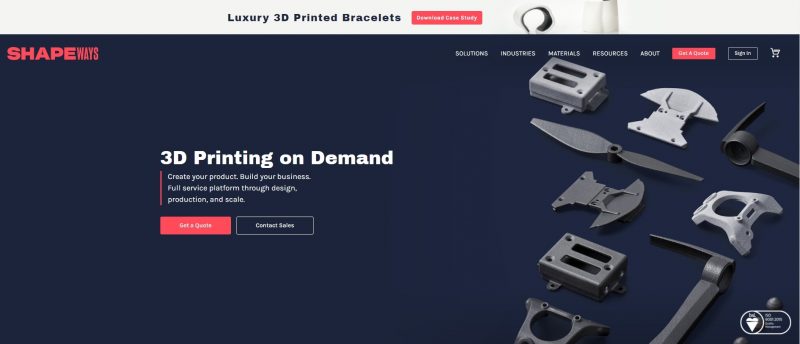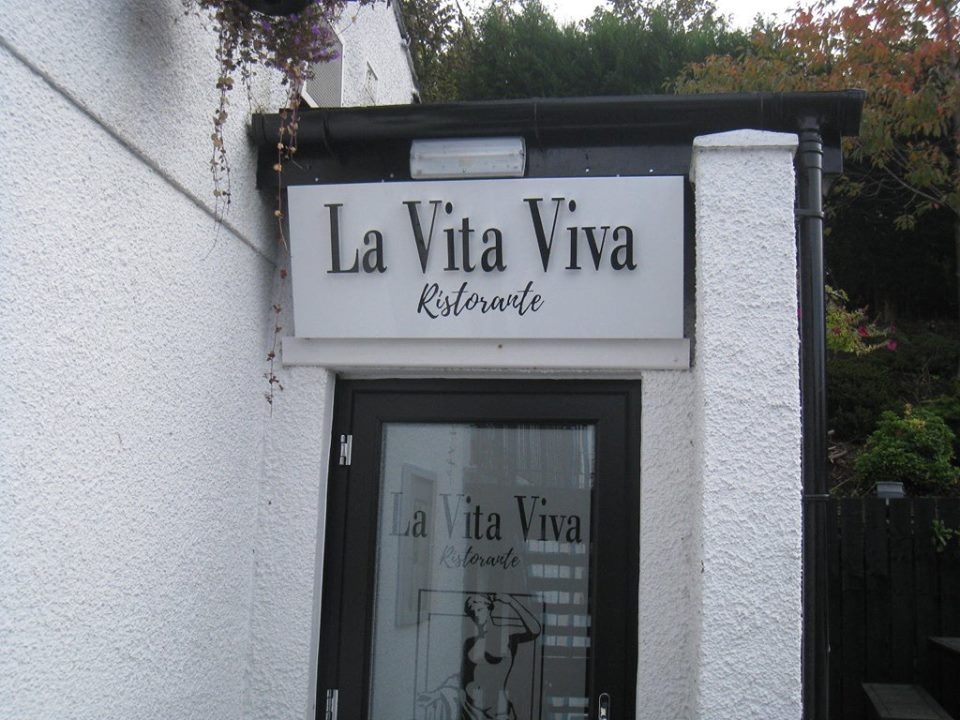Home › Forums › Sign Making Discussions › CNC Router and Engraving › 3D Printing – Applications in signmaking?
Tagged: 3D, makerbot, print, printer, printing, shapeways-3d-printing, signs, thingiverse
-
3D Printing – Applications in signmaking?
Posted by Phill Fenton on 2 October 2015 at 09:03Finally bought myself a 3D printer to play with and for my daughter Sally to use in her Jewellery business.
I’m going to use it to print 3d versions of customer logos – perhaps to use as badges to go onto vehicles, or even to cast silver versions of their logos to wear as Jewellery
Apart from that – I haven’t a clue what to do with it 😕
Any ideas (apart from using it to print another 3d printer – I’ve heard that one already)
Graham Shand replied 8 years ago 12 Members · 33 Replies -
33 Replies
-
I have looked at these for a while….love the technology but can’t see where it can make me money.
Will be really interested to here how you get on with it.
Lots of files being shared at http://www.thingiverse.com which may inspire you.John -
I was looking at making one same kind of idea as the router you built Phill, what make/model did you buy & what different machines did you look at before settling on the one you got Phill oh & what made you decide that would be your best option. Like John I am fascinated by the technology.
-
Sorry forgot to ask, what software are you using for 3D modeling? Whole new ball game with that lol, been doing some modelling myself but hasn’t been going great, keep giving myself a headache lol
-
Thanks for the link John – very interesting site, I’ve downloaded a few models already to try out later. :thumbup2:Martin – I was thinking of building one too when I got a mailshot in from RS components featuring this new printer:-
http://uk.rs-online.com/web/p/3d-printers/8625705/
My daughter was staying at home for a few days and I mentioned it to her. It prints down to .2mm resolution (whereas for fine detail in jewellery making .1mm resolution is recommended). But my enthusiasm got the better of me and I decided to buy it anyway cos it was cheap (relatively). I didn’t want to spend a fortune on something that I may never really use – but my Daughter would be able to use it to refine her designs and when necessary get a more detailed version made by a specialist online printer like http://www.shapeways.com
She uses Rhino for her modeling and I have had a play around with it. It’s a big learning curve – she’s very skilled at using it, I just print the models. -
Ive had one for 2 years. in that time it has been quite useful as a paperweight.
-
Yes I knew you had one Simon and was wondering how you were getting on with it?
-
quote Phill Fenton:Apart from that – I haven’t a clue what to do with it 😕
Any ideas (apart from using it to print another 3d printer – I’ve heard that one already):lol1: :lol1: :lol1:
Thanks a million for posting your link etc Phil, really appreciate it.
I would love to hear any feedback you can add here of your finds over the next week or two if you find anything negative worth considering. I think as something to dip your toe in and try as a hobby, the price is realistic in comparison to the others i have looked at.
I know fine well you get what you pay for, so i am not expecting to build my first plastic Rolex just yet. :lol1:
actually, its not for me at all but a gift for a family member that i know would love it.
in addition to the machine itself and reals of the plastic. is there anything else you would recommend to purchase with this?
i.e. does it need a high spec PC etc.thanks for any feedback on this from you or Simon… 😀
-
I bought it as a curiosity, very much like you, Phill.
To be honest I haven’t really sold the idea to my customers.
I am sure It is quite doable and sellable. Letters are easy to make using Sketchup or whatever. We are currently in the middle of an inside and out fit-out of a legal firm in a new building, and they want four boardrooms named.
I am considering using 3d printed letters because the names will be quite small – about an inch high – and a 3d printer is great at small things.
They would have to be painted or gold-leafed because the bare plastic is very cheap – looking.
This is the first time I have come close to offering them as a signage solution.
If I use the 3d printer for it I will post the results. It is a Makerbot Replicator 2x, and it prints ABS and PLA plastic.
Here are some letters I have made with it.
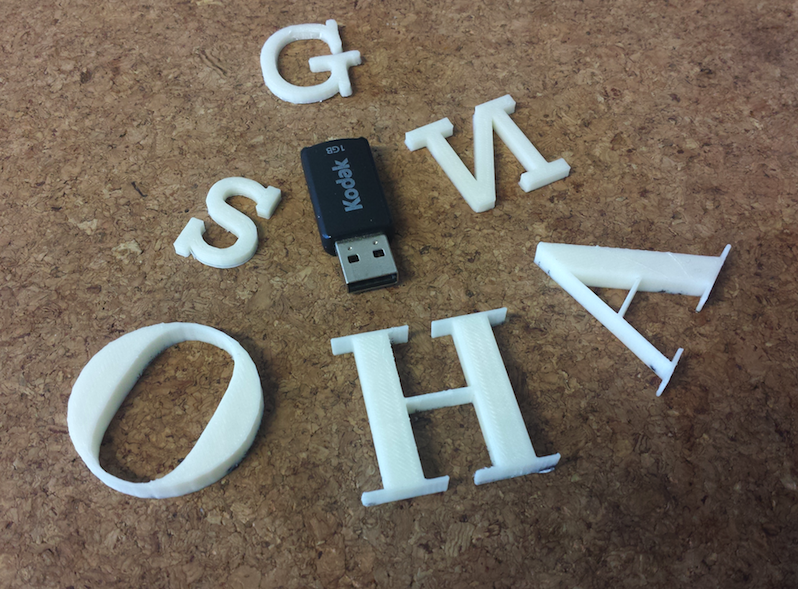
-
quote Robert Lambie:in addition to the machine itself and reals of the plastic. is there anything else you would recommend to purchase with this?
i.e. does it need a high spec PC etc.You need software to create the 3d models, just as you need sofware to create layouts for signs.
The software that comes with it does not allow you to create 3d models. It is a utility that converst .stl files (a standard 3d file format) into a form the printer recognises. This is then saved onto a usb stick and plugged into the printer. The printer has it’s own control panel and loads the model from the usb stick. Alternatively you can transfer the model to the printer via a usb cable plugged into your pc.
Even without specialised software for creating 3d models you can have a lot of fun downloading models from the net to print (as per the link John Posted up earlier)
-
With a bit more experimentation I have discovered that different filaments make a big difference to the print quality. Still racking my brains for practical applications in sign making. One suggestion is to make up hollow lettering to allow LEDs to be fitted inside? However, in practice, I am limited to an overall maximum size of 150mm x 150mm x 140mm. Any other suggestions?
Attachments:
-
how about braille? I think most sign makers don’t have facilities to do decent braille?
I’ve thought about this too as I love my gadgets but even after looking around the print show I still couldn’t really think of anything worth while for sign making.
-
Small letters can be made by laser engraver cutter and much larger bed but obviously more costly.
As for more sign usage I can think of many but the best is by far simple brackets to for Correx boards or hangers etc. Those bits that sometimes you don’t know what they are or where to get from but know you could make something that could solve the solution for fitting.
-
Some great suggestions there – thanks Warren and Michael 😀
-
Phil,
Very interested to know what software you are using, I’ve been trying Sketchup and the far more complex Blender, which appears to be better but quite difficult to learn, well I think so.
-
Hi Steve
My Daughter has Rhino which is what I’ve been trying out. Quite tricky though working out how to make it do the things you want it to do. She’s the expert and knows a lot more than I do
-
My first practical application using the 3d printer. The hollow letters making up the words “The” and “Signs” were printed to produce a hollow return on the word “signs”. This was capped off with 5mm CNC cut red gloss PVC. The backing tray was made from white folded aluminum composite.
The lettering was mounted onto the pan using standoff locators and LEDs were fitted into the back of each letter to producing a halo effect. The LEDs are powered by a small battery which is charged up during the day by a small solar panel mounted on the top of the sign. The Scot Petshop sign is a CNC cut dimensional sign and is not illuminatedAttachments:
-
Thats a result Phill.
It Looks good, and spreads the light very well.Michael the trouble with making fittings with low end 3d printers is the inherent strength of the object is not really that good.
Although most can use ABS, which is a high strength engineering plastic, the machine builds up the object from a continuous strand of the stuff that doesnt really stick to itself that well, and the result is quite fibrous and easily torn/broken
So things like brackets are just waiting to fail under stress.Simon.
-
that is pretty cool phil, how long does it take to print a letter ?
-
It’s a slow process – each letter can take a couple of hours.
-
Here’s my latest effort. The sign measures 3M in length made from three aluminum composite folded pans. The individual letters and the logo were 3D printed and topped off with 5mm CNC cut black PVC. Some of the letters and the logo had to be 3D printed in sections and glued together as they were too big to print in one. LEDs are fitted inside each letter so the whole thing lights up. As I said earlier it’s quite a slow process but the printer is working away in the background whilst you are getting on with other things so the number of actual man-hours spent creating the sign is probably a lot less than making traditional built-up lettering
Attachments:
-
that look really well , did it take long to print each letter ? :claps: :claps:
-
Each letter was a couple of hours, some even longer (eg the letters H and B had 4 component parts, and the logo had about 10 component parts. However, my initial concerns about the print area being a limiting factor are unfounded as any size of letter can theoretically be produced by increasing the number of components making up the model.
-
Is this the “first” actual 3D printed sign ever?
I certainly haven’t seen anything on this scale before. Now how long will it be before this type of thing Phill has done is a common way to fabricate signs? let’s say you have a Sign panel on a flatbed machine with a moving bed or gantries like an Inca or Mimaki flatbed and a print head outputting whatever plastic liquid is required. Not only printing letters but 3D shapes coming our from the sign surface.
I don’t think this would replace the likes of vacuum-formed signs where intricacy is not required and volume is required but certainly for many other types of one-off or short runs are required. Painting / Colouring would still be manual of course, well at least till the Colour 3D printers are perfected too. If they can 3D print a house with concrete it is only a matter of time before another skilled fabrication by man is phased out.
-
Wow you’ve been busy Phill, the most I’ve done with ours is make parts for my machines and bikes.
Have you had many problems with the nozzle blocking?
Steve
-
No, non at all. The biggest problem used to be the models warping on the print bed as the print progressed, but increasing the bed temperature solved this
-
Right, We’ve been having problems with the ABS blocking the nozzle, I think we’ll go back to PLA and get some better ABS.
Like you I got ours for my son who was doing engineering, I thought it’d be good for him to get his ideas into a real object but he’s not actually used it as much as I was hoping, still it’s made a few useful items but nothing for signs yet.Steve
-
Phil just saw your post, I bought one a week ago and have been entertaining myself with learning new software and trying out various projects, very surprised and the quality and speed that these files can be covered to 3D, I suspect a new sub forum might be needed LOL
-
Yes, I reckon 3D printing has a big future in sign making. The machines are getting bigger all the time and don’t cost a lot. Here’s one that has a massive print area making the production of large built-up lettering easily achievable.:-
https://www.amazon.co.uk/Creality-3D-Pr … 3d+printer
Meanwhile, I am still struggling by with my old printer with a much more limited print size, but I am seriously considering upgrading to a larger machine. Here’s another I made earlier, and I spent a large part of today printing the components of another sign I am working on for a customer.Attachments:
Log in to reply.


